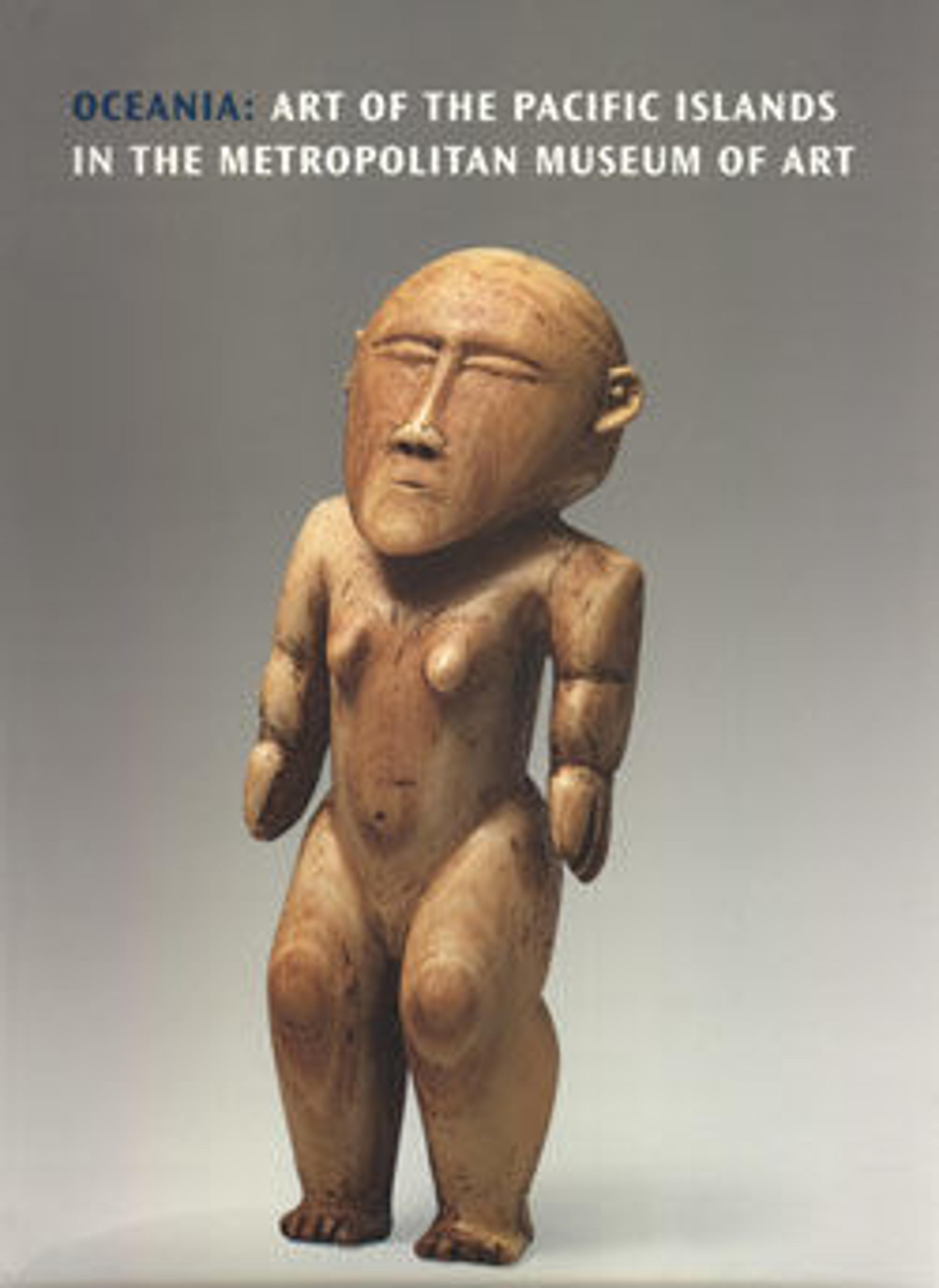Korwar (ancestor figure)
Formerly in the collection of the Surrealist poet and theoretician André Breton (1896–1966), this remarkable korwar, or ancestor figure, exemplifies the distinctive approach to the human form that prompted many Surrealists to seek inspiration in Oceanic art. Created in the Cenderawasih Bay region of northwestern New Guinea, korwar represented individuals who had recently died. Each served as a supernatural container into which the spirit of the newly deceased ancestor could be called for consultation or the presentation of offerings.
Korwar imagery was highly conventionalized, depicting the ancestor in a seated or standing position with the robust head and arrow-shaped nose that are the hallmarks of the style. Although the sex of the figures is often difficult to determine, all were originally male or female, depending on the gender of the deceased. Normally kept in the house of the deceased's family, korwar were also carried along on dangerous sea voyages to assure a successful outcome. Cenderawasih canoes had korwar heads incorporated into their prow and stern ornaments, and miniature korwar were carried as amulets. The pervasive presence of these ancestor images protected the living and emphasized the importance of ancestors in all aspects of everyday life.
Korwar imagery was highly conventionalized, depicting the ancestor in a seated or standing position with the robust head and arrow-shaped nose that are the hallmarks of the style. Although the sex of the figures is often difficult to determine, all were originally male or female, depending on the gender of the deceased. Normally kept in the house of the deceased's family, korwar were also carried along on dangerous sea voyages to assure a successful outcome. Cenderawasih canoes had korwar heads incorporated into their prow and stern ornaments, and miniature korwar were carried as amulets. The pervasive presence of these ancestor images protected the living and emphasized the importance of ancestors in all aspects of everyday life.
Artwork Details
- Title:Korwar (ancestor figure)
- Artist:Cenderawasih Bay artist
- Date:late 19th–early 20th century
- Geography:Indonesia, West Papua, Cenderawasih Bay region
- Culture:Cenderawasih Bay
- Medium:Wood, glass beads
- Dimensions:H. 10 5/8 × W. 4 1/4 × D. 4 5/8 in. (27 × 10.8 × 11.7 cm)
- Classification:Wood-Sculpture
- Credit Line:Purchase, Fred and Rita Richman Gift and Rogers Fund, 2001
- Object Number:2001.674
- Curatorial Department: The Michael C. Rockefeller Wing
More Artwork
Research Resources
The Met provides unparalleled resources for research and welcomes an international community of students and scholars. The Met's Open Access API is where creators and researchers can connect to the The Met collection. Open Access data and public domain images are available for unrestricted commercial and noncommercial use without permission or fee.
To request images under copyright and other restrictions, please use this Image Request form.
Feedback
We continue to research and examine historical and cultural context for objects in The Met collection. If you have comments or questions about this object record, please contact us using the form below. The Museum looks forward to receiving your comments.
